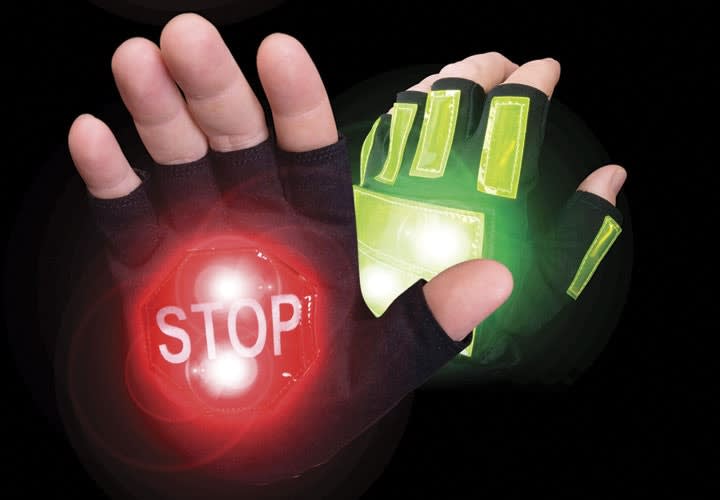"I direct traffic at night, in the day, in the shadows, and I wear all the latest reflective gear, but it's never quite enough," says Bushee, himself a part-time police officer. "I started to think, I know I could do something better."
It took the better half of a year for Bushee to come up with a workable idea: LED light strips in a reflective glove for a one-two punch of visibility. Another year was spent improving on the LED light strips the company already had and developing a material that would have the desired effect in combination with the lights.
"With our LED light strips that fit inside of it, the material acts as a lens on a lighthouse to actually project the light out," Bushee explains. He calls it Active Illumination Reflective technology. The colored, semi-transparent material is made up of a series of tiny little panes. "One's a window, one's a mirror. The ones that are windows let the light out, and mirrors reflect the light back," he says. In addition, tiny lines on the "panes," situated one way on the "mirrors" and in a perpendicular version on the "windows," flatten out the light and create a prismatic effect.
On the palm of each glove is a red stop sign pocket made of this material that holds two LED strips, and on the back of the hand are two green light strips that hold one LED strip each. The fingers on the back of the glove have additional green reflective/refractive material. Each removable LED light strip, similar to the company's APALS, has a simple button. Pressing it changes the mode: rapid flash, slow flash, and steady-on. A fourth press on the button turns the LED strip off. The combination allows motorists to see the light up to at least one-quarter mile away, and the replaceable lithium batteries last for up to 35 hours.
With so many distracted drivers out there focusing on texting or GPS directions instead of the road, Bushee worries about them unintentionally moving toward a police car's blinding flashing lights "like a moth to a flame" and hitting a police officer in the dark. Because of this, he suggests turning on the less bright side lights of a vehicle so that drivers can better see the lights of the gloves and follow any visual instructions from a police officer wearing them.













